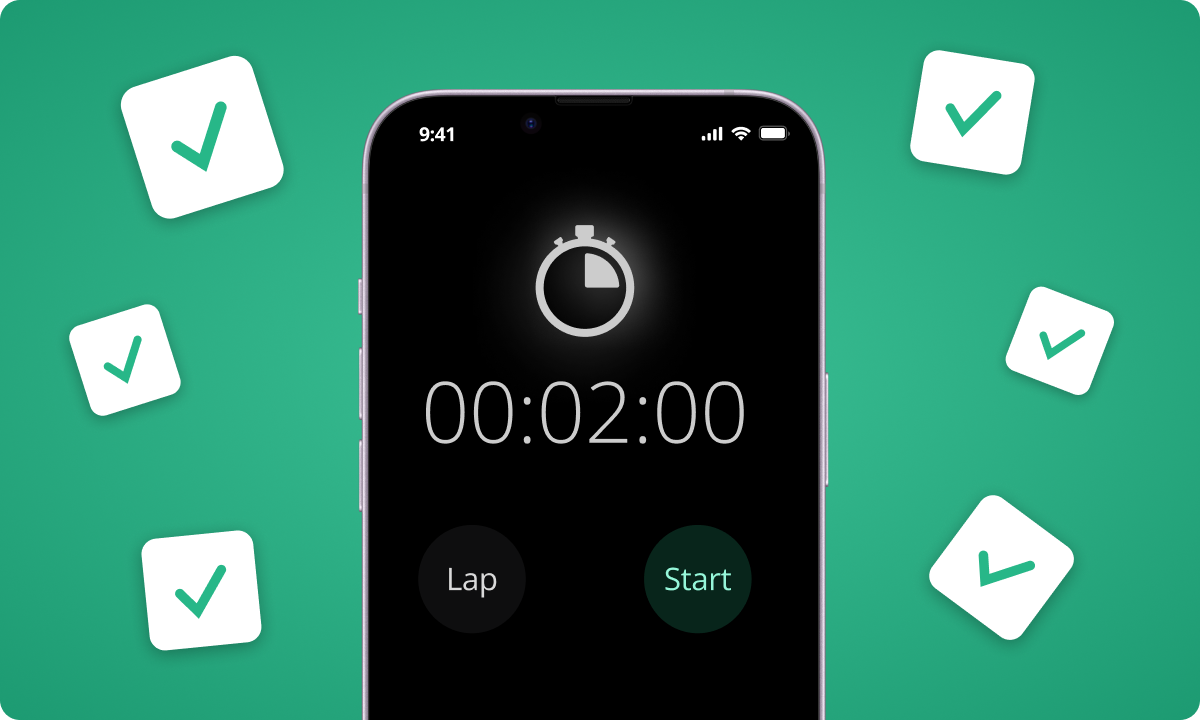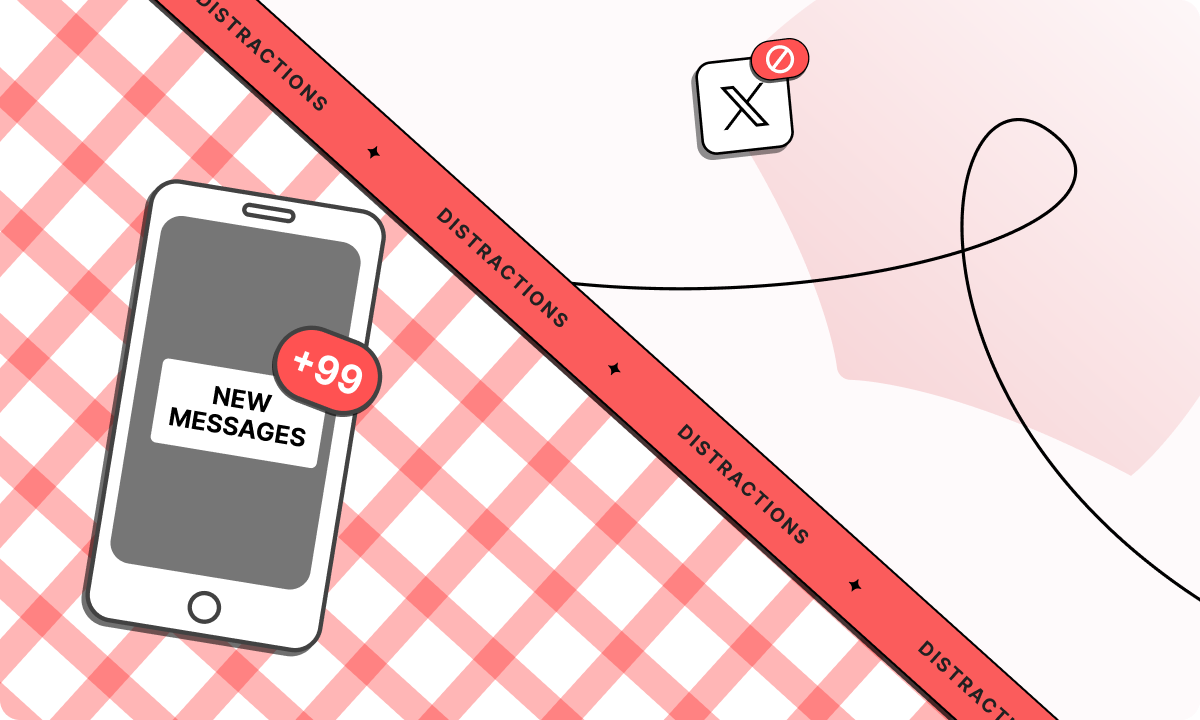You wake up each morning with a clean slate—no small tasks looming over your head. This is what the 2-minute rule promises: a hack created to deal with small tasks as soon as they arise, so they never become big, overwhelming ones. But exactly how does the rule work and what can you accomplish in 2 minutes? Can this yield real results in productivity? Let’s find out.
What is the two-minute rule?
The 2-minute rule advises that any task that can be done in two minutes or less should just be done there and then. It therefore encourages immediate action, clearing the little tasks from your schedule to give mental space and energy for bigger projects. Originally advanced by a productivity expert named David Allen, this rule is a part of his “Getting Things Done” methodology. By acting on small tasks immediately, you’re stopping them from turning into distracting elements that, over time, mount and become a really big problem that causes much stress. This simplicity of the rule provides an open path toward better productivity that is not burdened by a steep learning curve.
This rule was, in fact, a part of a much bigger system Allen had evolved for the effective management of tasks and commitments. The attention paid to the small things immediately creates space so that the minor chores are continually cleared, and large projects get focused attention. Such rapid action not only enhances productivity but also fosters a sense of accomplishment that motivates a person to approach work and other personal tasks in a more positive and proactive manner.
How does the 2-minute rule work?
When some task comes in front of you, glance over it. If you can do it within two minutes, do it there and then. For example, answering a small email, cleaning up your desk, or calling somebody for a quick discussion can be summarized immediately. Since these small tasks are not going to accumulate at both your workspace and head, finish them and clear them off your way immediately. The key is not allowing such tasks to build up to the point where they become a distraction. This approach can turn out to be particularly useful in high-paced environments where the huge volumes of small tasks can easily get overwhelming.
Next time you have a tiny task, ask yourself if it comes within the 2-minute rule criteria. If it does, do it now. This can be integrated pretty seamlessly into habit and daily routine as a sort of habit to continually optimize your productivity. As for the tasks that are going to take a little longer, break them down into further segments that fit within the 2-minute window and work through them piece by piece without overshadowing your bigger goals.
What are the benefits of using the 2-minute rule?
There are numerous benefits associated with the 2-minute rule that are listed herein, bringing out the best when it is applied:
Improved productivity
Focusing on homework without distractions enables students to give their full attention to the tasks at hand. This leads to better comprehension of the material and higher-quality assignments. Distractions can result in poor understanding and subpar work, negatively impacting academic performance.
Reduced mental clutter
The two-minute rule lets you dump mental clutter so that your mind will be exceptionally clear when focusing on big and important projects. Taking care of small things right away makes it easier to be clear-minded so you can focus on the big, challenging tasks.
Eliminates procrastination
One of the greatest advantages of this concept is in the relief it brings regarding procrastination. By taking immediate action for small tasks, you avoid the frequent behavior of postponing duties that appear of little value. This immediate action builds momentum and ensures you stay on course to see tasks being completed effectively.
Quickness and sharpness
Doing this regular exercise will make you swift and sharp. This practice trains you to respond promptly and decisively, and this results in improving your overall responsiveness and decision-making skills in both professional and personal settings..
What are the drawbacks of using the 2-minute rule?
The rule might have some benefits but also has its associated disadvantages that you ought to be aware of:
Interfering with important projects
One major disadvantage of this rule is that it can create an overemphasized focus on small tasks, which may disturb important projects. Finishing small tasks quickly does make one feel good about it, but high emphasis on the minor ones will distract the time and energy that’s supposed to be used on larger and major projects.
Disruption of deep work
Small tasks will constantly interrupt and ruin the deep work done in long blocks of focused time. Deep work is quintessential for making important headway regarding complex tasks. You might disrupt your concentration by frequently shifting gears to handle those 2-minute tasks. That’s why it’s so hard to get into deep, focused states that you need for substantive progress on important projects.
False sense of productivity
Another problem that can crop up due to this concept is that it is going to mislead you into thinking that you are being productive. The minor tasks that you check off may make you feel good for a second, but what it really does is give you an illusion that you are working productively without really getting any important work done. As a result of this false feeling of productivity, you end up investing too much time in trivial tasks and not giving enough time to more important duties.
How to use the 2-minute rule to avoid procrastination
The 2-minute rule can turn out to be a very workable way of fighting back against procrastination. It encourages you to act on small tasks right away so that minor tasks won’t pile up and cause you pressure, which could distract your focus from big and important projects later. Here are some ways to use the 2-minute rule to stop procrastination:
1. Do quick tasks immediately
You should do any quick task there and then, whenever you find it. Minute trifles, when corrected, do not accumulate and will allow you to carry on without having much pressure. This serves to clean up the mind of clutter and prevents a long to-do list of minor chores from weighing you down.
2. Block out unhelpful distractions with BlockSite
Tools like BlockSite help in disabling unwanted distractions. Available as a Chrome browser extension and a mobile app that allows you to block distracting websites and apps so that you can remain on target.
You can even do scheduled blocks so you can still access your favorite sites and applications on specific hours.
In creating an online environment under your control, you’ll be better equipped to handle the smaller tasks at hand without sidetracking into activities that unhelpfully detract from the bigger picture.
3. Break down bigger tasks
The goal is to break down large tasks into small, two-minute tasks. This makes intimidating projects more accessible and much easier to begin. Working on one small piece at a time enables you to build a little momentum and make steady progress with reduced chances of procrastination.
How to implement the 2-minute rule in your life
The 2-minute rule is an easy, very basic productivity practice that can help you become more efficient in both your personal and professional life. Here’s how you can, quite practically, apply this habit in most areas of your life.
Step 1: Do small tasks now
At work, clear your small emails, requests for feedback, or quick follow-ups immediately after you start working. By doing this, small tasks never accumulate and won’t overwhelm you. You are also freed from constantly thinking about such tasks, and your mind is thus clear to focus on the important ones.
Step 2: Efficiently manage your domestic chores
Notice, and act on domestic tasks such as watering plants, cleaning up, or washing dishes as soon as they require attention. Handling these small errands prevents the accumulation of tasks that eventually become burdensome. Such a habit of maintaining tidiness of your surroundings at all times rids you of undue stress and makes living conditions much more pleasurable apart from keeping your house in order.
Step 3: Form new habits
Take two minutes every day to build a new habit, such as reading one page in your book or stretching. Such small acts, when consistently done, can turn out to make huge differences. Just a few minutes each day will bring about constructive habits that can definitely improve your wellness and development in a big way.
Step 4: Jump-start your day with quick qins
First thing in the morning, list a few small tasks that can be done super quickly and knock them out there and then. This sets a positive tone for the rest of the day as you will gain momentum and build your confidence and energy to focus on the larger projects. The power that comes from being productive can do wonders for your motivation when you accomplish quick wins at the start of your day.
Step 5: Use productivity tools to stay focused
Tools like BlockSite can increase your productivity by keeping you far away from irrelevant websites. This app and browser extension helps you finish quick tasks effectively by making sure there are no distractions.
While working on small tasks, you can set BlockSite to block specific sites during a Focus Session to avoid wasting time and so you can concentrate on more important goals.
Get ready for a more productive life
When done correctly, the 2-minute rule can take you on the path to a more productive life. These smallest of actions may end up taking you to much bigger things. So let the small things not accumulate and deviate your attention; act on them promptly and keep your focus on the main goals.
Download BlockSite now and implement this with the 2-minute rule for a completely distraction-free, ultimate productivity boost. These practices, when adopted, will change your daily rituals without leaving any space to procrastinate.
FAQs
Can the 2 minute rule be applied to bigger projects?
Yes, it does. Breaking down large projects into smaller, quick tasks will help you keep up the momentum. For instance, when working on a large report, compose an outline or maybe an introduction to a section—all of which you can easily do in two minutes. This little trick makes big tasks less overwhelming and gets you moving toward completion.
How often throughout the day should I use the 2-minute rule?
Apply the rule any time something small needs to be done. Balance it with periods of deep and uninterrupted work over more important tasks. It’s recommended to slice your day into specific intervals when you’re working on these short tasks to avoid constant distractions and remain productive.
Can I use the 2-minute rule along with any other productivity techniques?
Absolutely. This pairs well with techniques such as time blocking or even the Pomodoro Technique for a nicely balanced productive workflow. For example, you could use your short Pomodoro breaks to handle those small tasks rather than breaking your focused work periods. Putting these strategies together might be able to provide the approach toward handling your time.
What sort of tasks are common for the 2-minute rule?
Things that take less than 2 minutes include responding to any quick emails, cleaning up your desk, or writing some notes. Other activities that also fall within this rule are quick administrative tasks, very short calls, or putting reminders—things that won’t pile up to cause unnecessary stress.
How does BlockSite help in applying the 2-minute rule?
BlockSite helps in time management by blocking those time-wasting sites so that you can remain focused on your work and handle small tasks in a much faster way. All these synchronizations are done so that productivity attempts don’t get blown up by internet distractions. It creates a streamlined routine for maximum efficiency.



